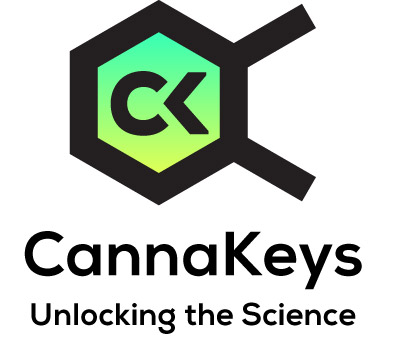Cannabidivarin (CBDV) Research Dashboard
What am I missing as a non-subscriber?
To see a full dashboard with study details and filtering, go to our DEMO page.
As a subscriber, you will be able to access dashboard insights including chemotype overviews and dosing summaries for medical conditions and organ system and receptor breakdowns for cannabinoid and terpene searches. Study lists present important guidance including dosing and chemotype information with the ability to drill down to the published material. And all outputs are fully filterable, to help find just the information you need. Stay up-to-date with the science of cannabis and the endocannabinoid system with CannaKeys.
CannaKeys has 46 studies associated with Cannabidivarin (CBDV).
Here is a small sampling of Cannabidivarin (CBDV) studies by title:
- Anticancer effect of minor phytocannabinoids in preclinical models of multiple myeloma
- Effects of cannabinoids on resting state functional brain connectivity: A systematic review
- Early Administration of the Phytocannabinoid Cannabidivarin Prevents the Neurobehavioral Abnormalities Associated with the Fmr1-KO Mouse Model of Fragile X Syndrome
- Efficacy and safety of cannabidivarin treatment of epilepsy in girls with Rett syndrome: A phase 1 clinical trial
- Phytocannabinoids regulate inflammation in IL-1β-stimulated human gingival fibroblasts
Components of the Cannabidivarin (CBDV) Research Dashboard
- Top medical conditions associated with Cannabidivarin (CBDV)
- Proven effects in clinical trials for Cannabidivarin (CBDV)
- Receptors associated with Cannabidivarin (CBDV)
- Individual study details for Cannabidivarin (CBDV)
Ready to become a subscriber? Go to our PRICING page.
Page Quick Links
Select New Cannabinoid
Overview - Cannabidivarin (CBDV)
Description of Cannabidivarin (CBDV)
Cannabidivarin (CBDV) was first isolated and described by L. Vollner et al., 1969.
Cannabidivarinic acid (CBDVA) is the acidic precursor to CBDV.
CBDV belongs to the CBD family of phytocannabinoids and shares several characteristics, such as non-psychoactivity (i.e., no cognitive changes are associated).
CBDV occurs naturally in cannabis and has been gaining attention in the research community for its novel and potentially diverse therapeutic abilities.
Typically higher contents of CBDV are found in strains abundant in CBD.
Other Names:
CannabidivarinCannabidivarol, CBDV, CBD-V and other supplier-based synonyms.
IUPAC Name: 2-[(1R,6R)-3-methyl-6-prop-1-en-2-ylcyclohex-2-en-1-yl]-5-propylbenzene-1,3-diol
Molecular Formula: C19H26O2
Source–PubChem
Cannabidivarin (CBDV) Properties and Effects
Only Members can view Properties and Effects information. See DEMO page.
Cannabidivarin (CBDV) Receptor Binding
Only Members can view Receptor Binding information. See DEMO page.
Disclaimer
Information on this site is provided for informational purposes only and is not meant to substitute for the advice provided by your own licensed physician or other medical professional. You
should not use the information contained herein for diagnosing or treating a health problem or disease. If using a product, you should read carefully all product packaging. If you have or suspect that you have a
medical problem, promptly contact your health care provider.
Information on this site is based on scientific studies (human, animal, or in vitro), clinical experience, or traditional usage as cited in each article. The results reported may not necessarily occur in all individuals. For many of the conditions discussed, treatment with prescription or over-the-counter medication is also available. Consult your physician, nutritionally oriented health care practitioner, and/or pharmacist for any health problem and before using any supplements or before making any changes in prescribed medications.

